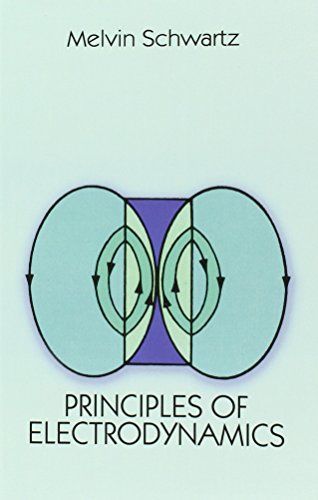Principles of electrodynamics pdf download
Par speece james le lundi, mars 21 2016, 20:52 - Lien permanent
Principles of electrodynamics. Melvin Schwartz

Principles.of.electrodynamics.pdf
ISBN: 0486654931,9780486654935 | 179 pages | 5 Mb

Principles of electrodynamics Melvin Schwartz
Publisher: Dover Publications
Though the principles of quantum electrodynamics were worked out by three individuals, the most famous founder of QED was undeniably Richard P. ON THE ELECTRODYNAMICS OF MOVING BODIES. The formalism was not completed until Maxwell saw the need, based on symmetry, for an extra term in the equation that relates current density to a resulting . As you can expect, there are pre-requisites, particularly mathematical. We have now deduced the requisite laws of the theory of kinematics corresponding to our two principles, and we proceed to show their application to electrodynamics. I read this book out of interest as a non-professional. Posted by ubpdqn on February 3, 2012. Unlike most of the standard texts, Electrodynamics neither assumes familiarity with basic concepts nor ends before reaching advanced theoretical principles. Principle,10 the electromagnetic field of a charged body vanishes in a vacuum. It turned out that the principles he discovered also applied to sub-atomic particles and the work led to a Nobel Prize for quantum electrodynamics (much to the astonishment of those around him). Einstein's explanation of special relativity, delivered in his 1905 paper On the Electrodynamics of Moving Bodies focuses on demolishing the idea of 'absolute rest', exemplified by the theoretical luminiferous aether. Download Classical Electrodynamics (Classical Theoretical Physics) (Repost) - Free chm, pdf ebooks rapidshare download, ebook torrents bittorrent download. A particular difficulty arises if one goes on to quantum electrodynamics with its fields of zero-point oscillations in the vacuum. A frequent homework or test question presented to physicists-in-training is to derive the final relationship between objects, forces, or concepts from “first principles.” The idea for the physicist is to see where such a relationship comes from, beginning with answer begs the question: what is it that oscillates? Today we know that the existence of a minimal measurable length leads to an extended uncertainty principle. Between electrical charges and their motions and the resulting electric and magnetic fields of force, led to a set of partial differential equations for the laws of electrodynamics.